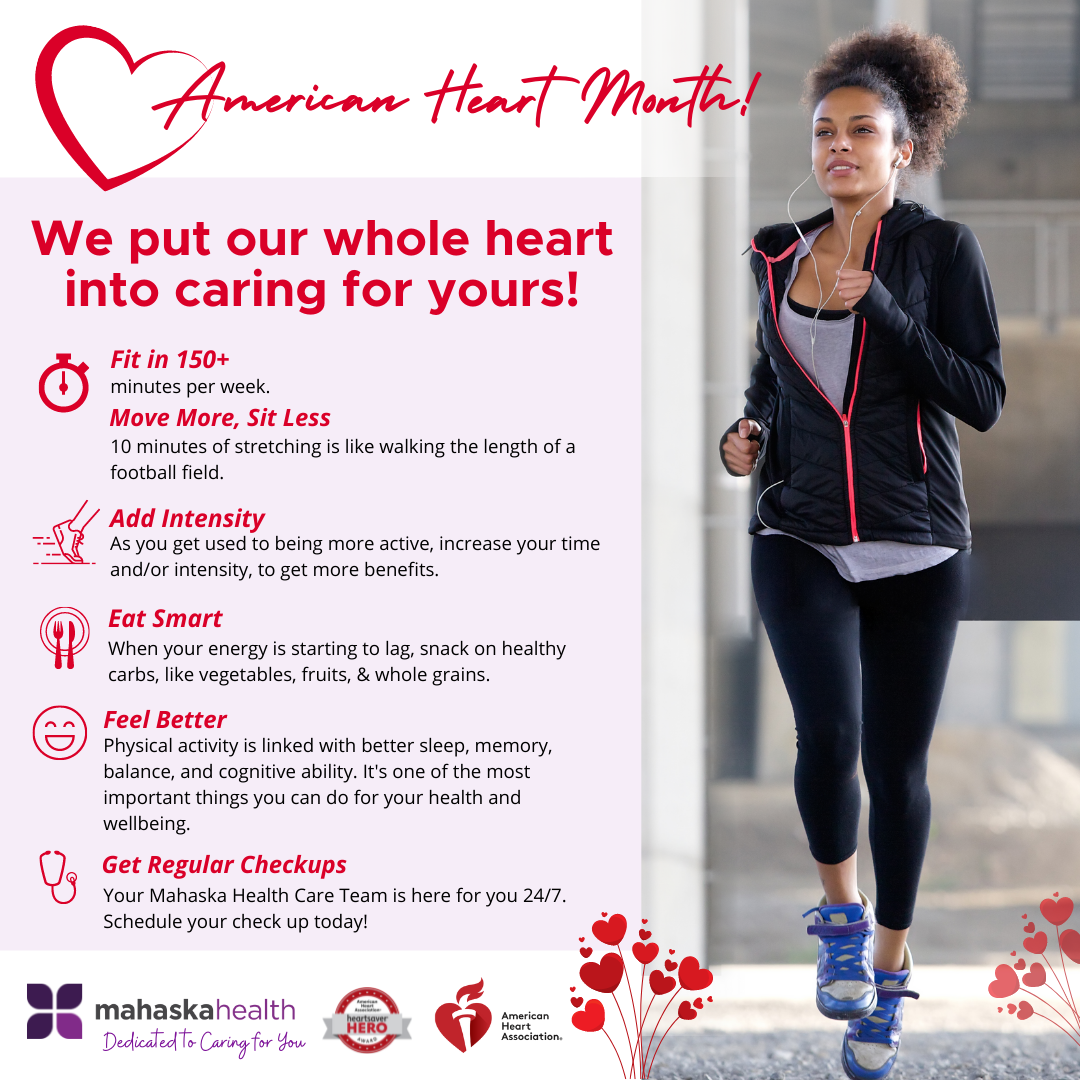Balancing Daily Activity
for Heart Health!
Every heart is different and special in its own way! But every heart needs to have a workout plan to keep you healthy! When you get moving, you are making the future for you and your family brighter for many years to come!
Ready to learn a few simple ways you can keep your heart healthy for years to come? Read on!
Consult your Primary Care doctor before starting any new exercise programs.
According to the American Heart Association, a heart healthy amount of exercise would be 150 minutes or more of moderate exercise a week or 75 minutes or more of vigorous exercise a week. This can be spread throughout the week and a variety of other activities can be included in the weekly regimen. Weight training or muscle strengthening activities are a good addition to your week of workouts and can serve to keep you from straining muscles or injuring them during vigorous workouts!
If you already enjoy an exercise regimen that is working for you, your heart will thank you! Remember to continue to increase your exercise capacity when workouts begin to feel routine or too easy. Here are some tips!
- No matter what volume of exercise you start with, just start with anything.
- During a work day, get up and walk or do some small exercises to help break up the day and keep your body used to movement throughout the day.
- Write out your plan! If you write something down and put it on your calendar, you can see the progress you have made and keep yourself motivated.
- Activities can be done inside or outside! Climbing stairs, running, walking, and jogging are all ways to get your heart rate up.
Intensity can vary based on goals! A workout that is considered to be moderate could include
- Brisk walking
- Water aerobics
- Dancing
- Tennis
- Gardening
- Biking slower than 10 miles per hour.
High intensity workouts could look like
- Hiking uphill
- Running
- Swimming laps
- Aerobic dancing
- Heavy yard work
- Cycling over 10 miles per hour
- Jumping Rope
So, how do you know if your heart rate is at a level that will benefit you? You can measure your heart’s BPM (beats per minute) as you complete different activities. Your resting heart rate is around 60 to 80 BPM. For someone under 40 years old, the maximum target heart rate would be 220 minus your age. For an individual over 40, calculating the target heart rate would be 180 minus the age of that individual.
The takeaway: Get moving! You have the power to build a stronger heart. It is clear that being more active benefits everyone and helps us live longer, healthier lives.
American Heart Association Recommendations for Physical Activity in Adults and Kids
If you have questions or would like to schedule a check-up, the Primary Care Team and Cardiopulmonary Team at Mahaska Health has the expertise to answer every one of them!

